By: Maureen Stickel and Tokozile Ngwenya
At the World Poultry Foundation (WPF), establishing robust monitoring and evaluation (M&E) systems is fundamental to our operations. We establish clear objectives, measurable indicators, and a baseline for ongoing assessment from the outset in each APMI country program. What sets the M&E program for the African Poultry Multiplication Initiative (APMI) apart is its strong focus on real-time data, which significantly enhances our ability to monitor progress and outcomes as they unfold. This strategy not only fosters accountability among our partners and within their teams, but also equips everyone with the insights needed to make informed decisions and drive business improvements throughout the implementation process and even after donor-funding ends. Here’s our process.
Theory of Change and Indicators
The Theory of Change outlines how the APMI program is expected to influence rural households, detailing each step from start to finish, ultimately leading to improved income, nutrition, and women’s empowerment. It is the first step in our M&E development and serves as a roadmap, helping us trace back and identify potential breakdowns if expected impacts are not realized.
Once the Theory of Change is established, we assign measurable indicators at each stage to track progress and identify any issues in key areas. These indicators are specific indicators, like bird health in Brooder Units, and help us refine our approach when necessary. Developing the right indicators is an iterative process that balances thoroughness with feasibility, drawing on both experience and established literature to ensure we meet program objectives without overwhelming financial and personnel resources.
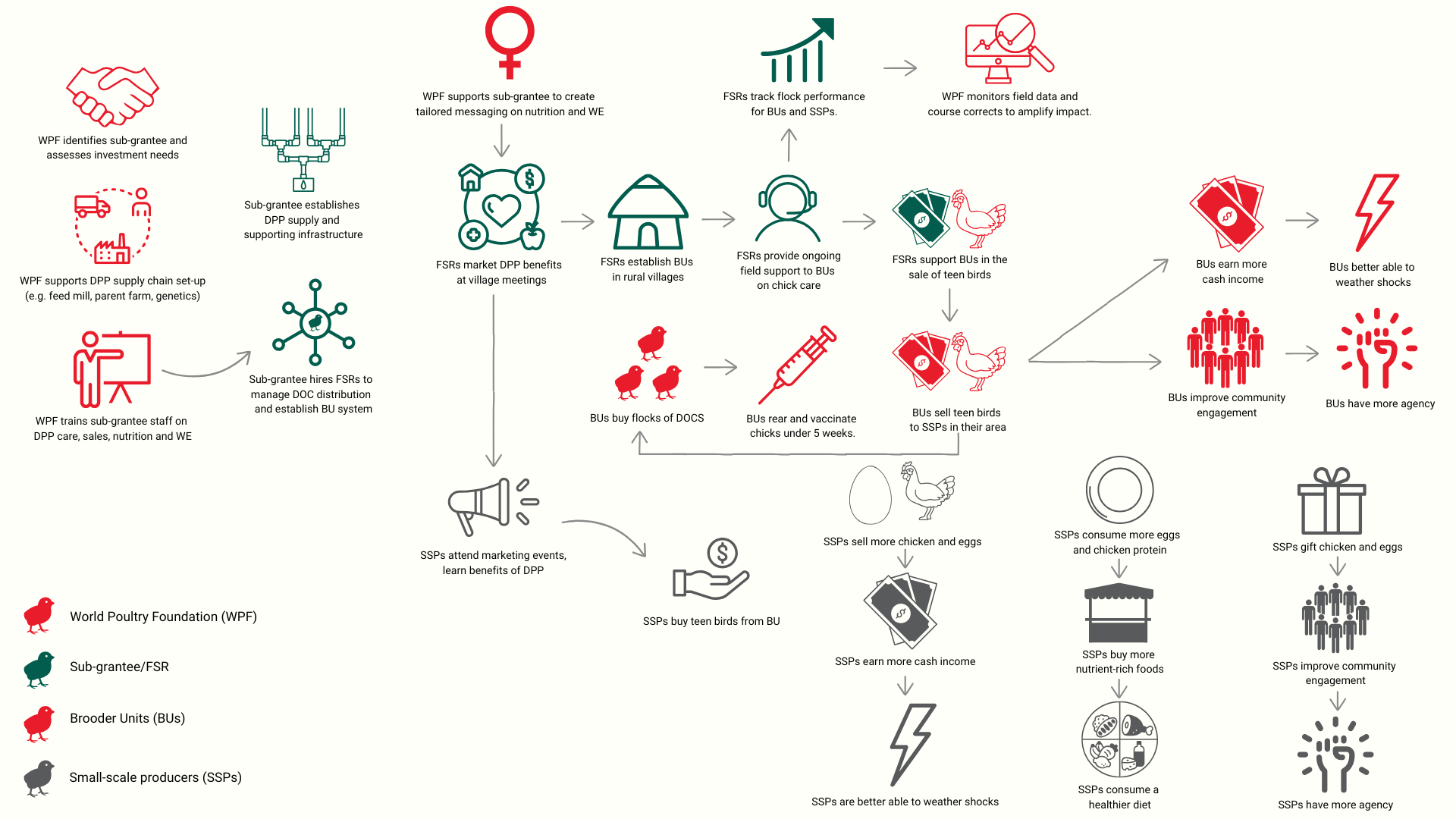
Real-time data collection
Once our indicators are established, the focus shifts to developing robust data collection tools that provide real-time insights and drive continuous learning for both WPF and our partners. To achieve this, we implemented several pathways for data collection, including day-to-day monitoring, quarterly reporting, and impact monitoring.
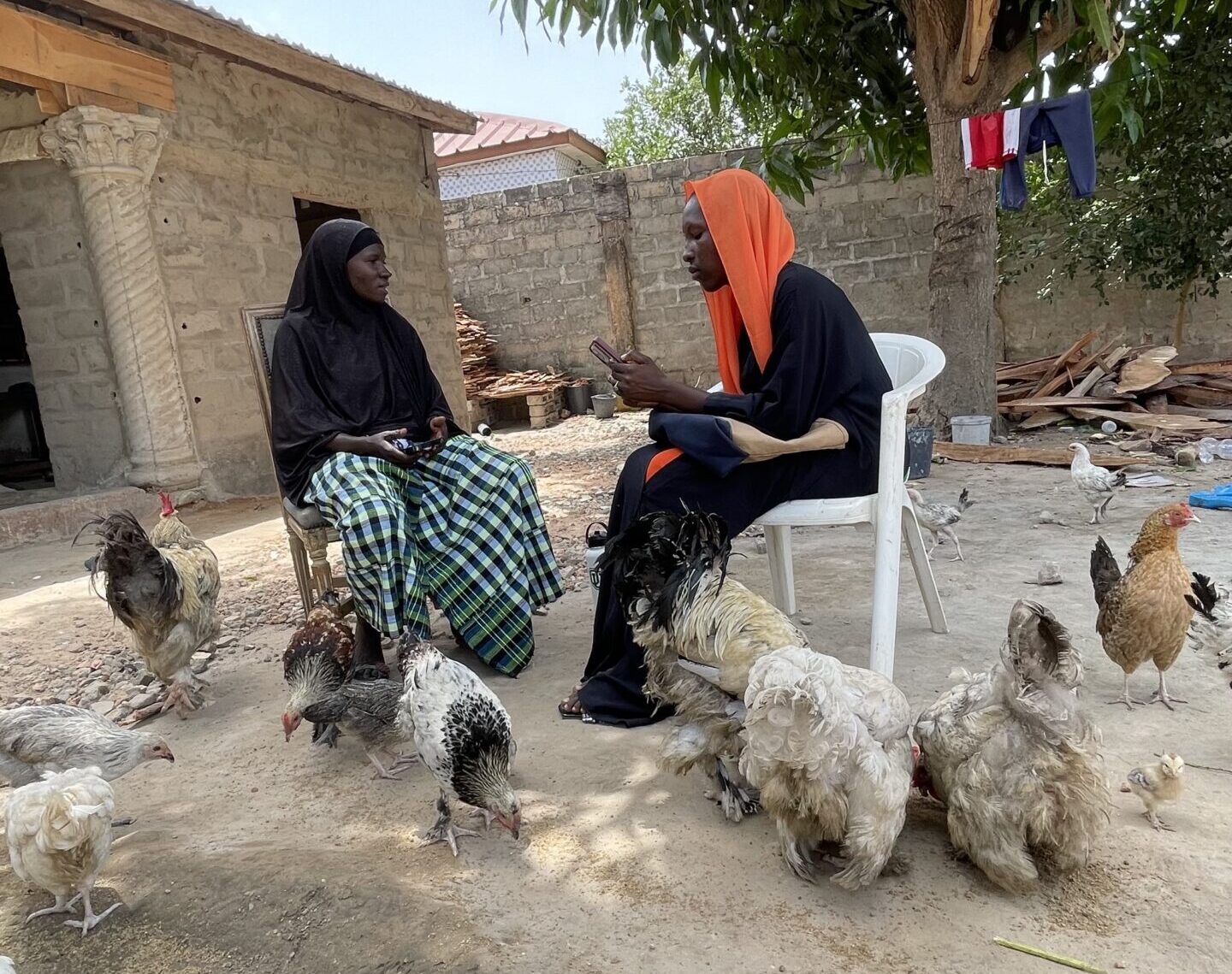
Central to this is the ability to collect and visualize data in real time, enabling immediate adjustments to programming when necessary. Real-time data collection and visualization not only help us track key performance indicators but also allow for timely decision-making, trend identification, and the ability to quickly pivot in response to emerging challenges.
To gather real-time data, we have implemented a mobile application called CommCare across all APMI countries, both current and former. CommCare is compatible with all Android devices and operates offline, making it highly effective in low-bandwidth and remote environments.
This daily monitoring enables us to continuously evaluate farmer and flock performance, track progress, identify trends, and assess APMI’s performance against established indicators. Field Service Representatives (FSRs) from our partner companies collect this vital information during their regular visits to Brooder Units (BUs) and small-scale producers.
Analysis and Data Visualization
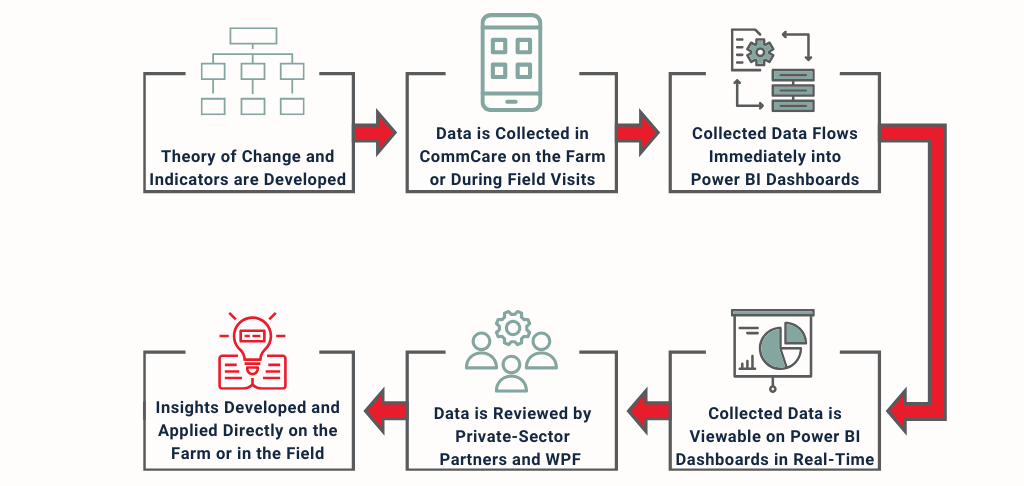
Collected data flows in real-time into another application called Power BI which creates powerful visual dashboards. These dashboards help partners and WPF identify trends, positive or negative, and make important business decisions. Monitoring, Evaluation, and Learning Coordinator Tokozile Ngwenya explains, “Power BI serves as the platform for transforming raw data collected through CommCare and other databases into actionable insights, trends, and visualizations. It enables users to create interactive dashboards, charts, graphs, and reports that facilitate data-driven decision-making, performance monitoring, and program management.” This collaborative approach ensures that the monitoring and evaluation process remains dynamic and responsive to the evolving needs of the program and stakeholders.
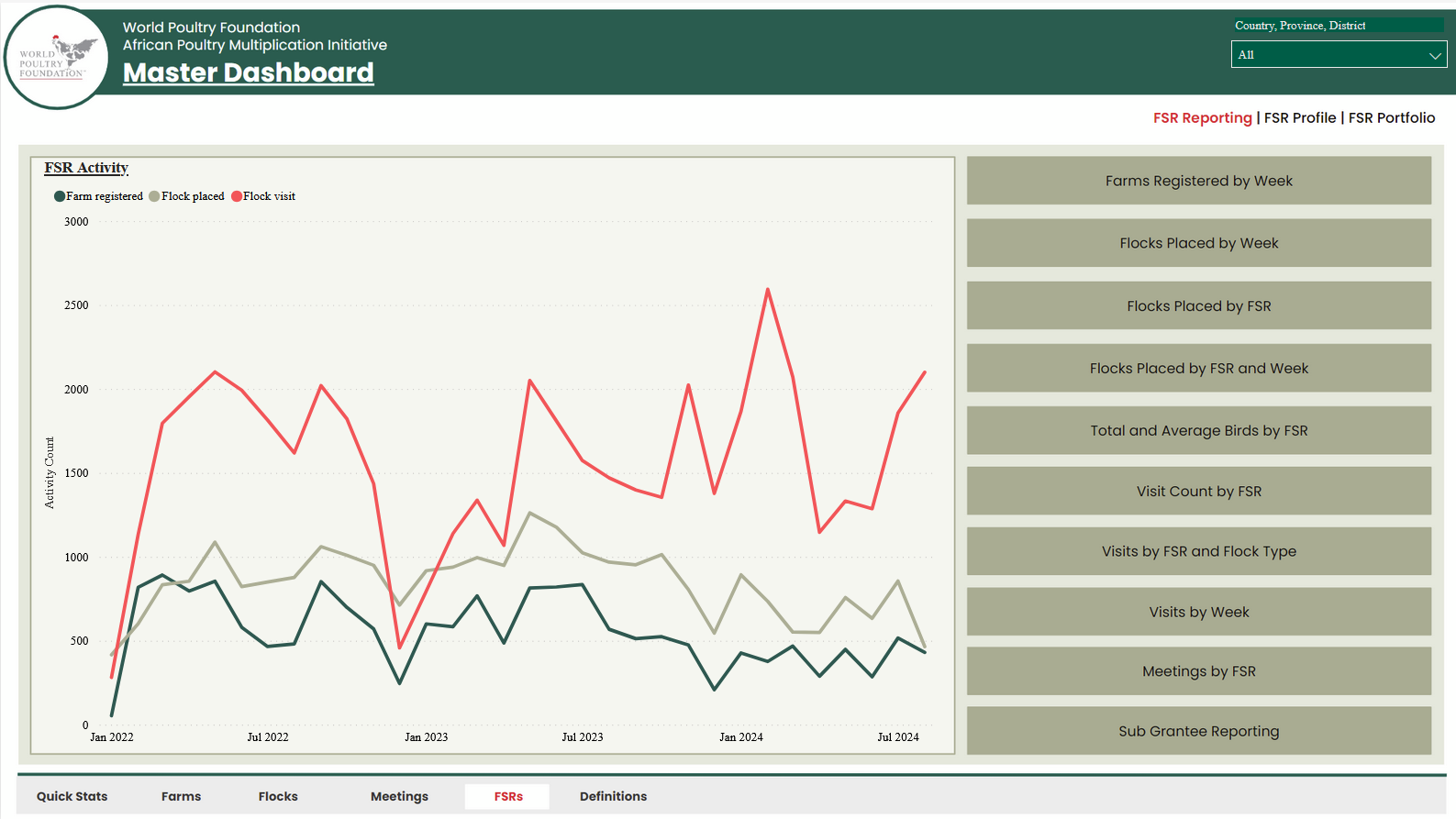 We have also recently expanded the applications to track other key pieces of the production pipeline: parent stock flocks and hatchery activities. This provides companies with valuable insights, helping them identify areas that need attention in managing these crucial aspects of farm activities and profitability.
We have also recently expanded the applications to track other key pieces of the production pipeline: parent stock flocks and hatchery activities. This provides companies with valuable insights, helping them identify areas that need attention in managing these crucial aspects of farm activities and profitability.
One of the most unique aspects of our M&E process is this fully automated data pipeline, allowing seamless collection and real-time visualization of key performance indicators. From the moment data is collected via CommCare by FSRs on the farm, it flows automatically into Power BI, where it is updated several times a day, providing an up-to-the-minute snapshot of program performance. This real-time access to data enables us and, more importantly, our partners to monitor trends, analyze flock performance, and make immediate data-driven decisions.
We meet regularly to check in with sub-grantees to monitor progress and offer guidance, allowing us to revise and adapt targets while addressing implementation challenges related to production goals. The data for these reports is aggregated by the companies and shared with WPF prior to each meeting, focusing on key outputs such as chick production and sales.
With a vast amount of data available, identifying learning opportunities and effectively using this information to support our programs can be challenging. We work closely with our partners to transition the data analysis and decision-making process to them, providing training that enables them to maximize the potential of these data tools and identify the most critical information for their success. Our goal is to ensure they can independently utilize this data, even after WPF’s involvement ends. By combining accurate, real-time data with regular in-depth discussions empowers partners to integrate these tools into their businesses to make informed decisions and continuously improve their operations.
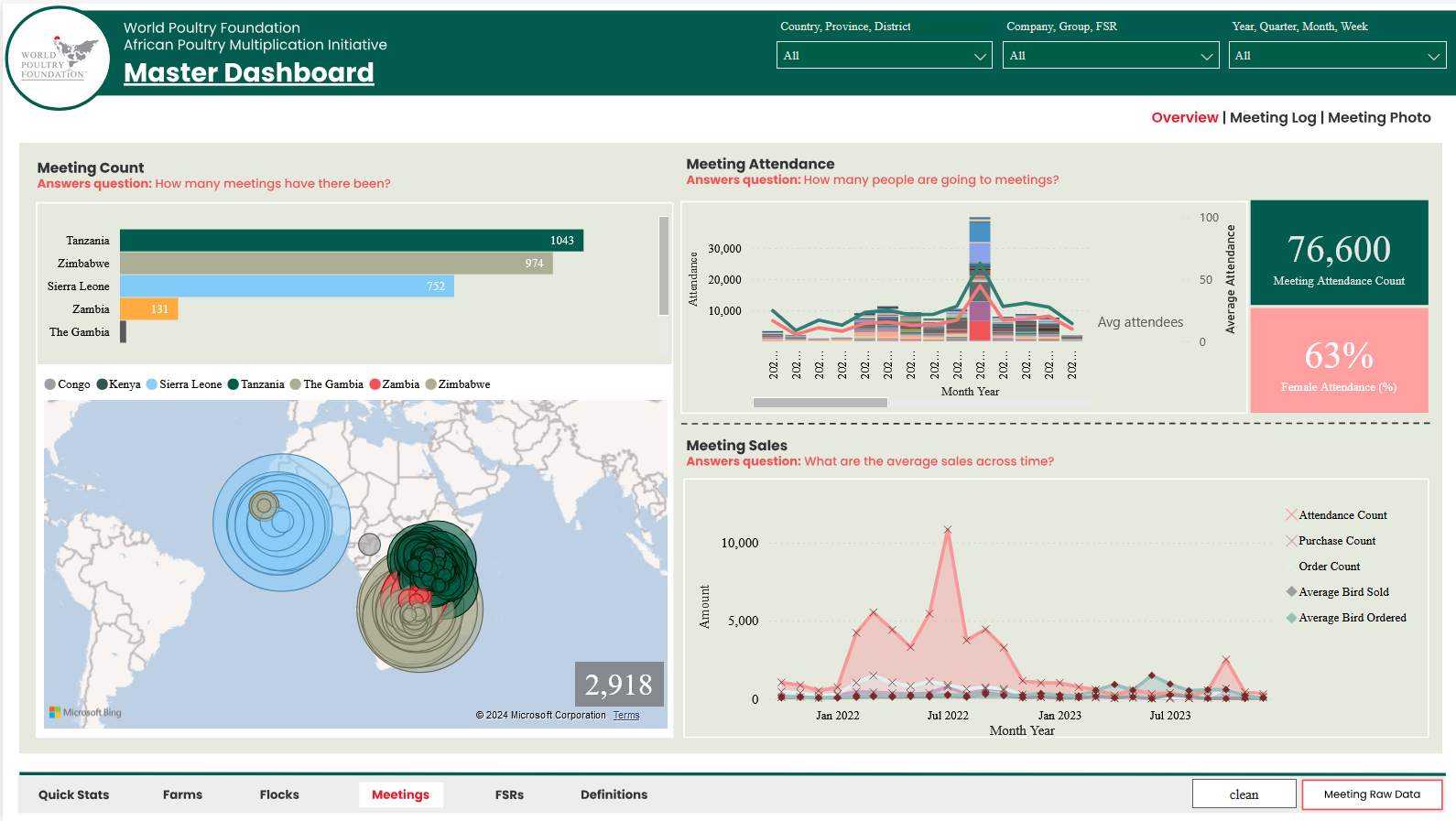
Working With Private-Sector Partners Across Countries and Cultures
Another advantage of these tools is their use across multiple countries, allowing data to be analyzed from a broader perspective to uncover larger insights and key takeaways. To ensure consistency, comparability, and data quality across countries, we standardize definitions and indicators. We also work closely with our partners to train them in improving data collection processes, ensuring high-quality outputs across all regions. Initially, partners planned to develop their own monitoring systems; however, this made cross-contextual analysis difficult and resulted in unnecessary additional expenses. A standardized platform and monitoring system streamlines processes, fosters consistency, and facilitates shared learning across diverse contexts. Analyzing meta-data across multiple countries, has given us clear data points showing that in-person support and training for farmers is linked to improved bird livability at the Brooder Unit (BU) level. Additionally, results from this data has helped us to compare the different dual-purpose breeds used by our partners and shows that productivity gains for farmers is the same across all breeds.
While consistency across countries is crucial for our larger-scale monitoring efforts, we customize at the margins to meet local needs as these tools are really business tools that should be integrated into the way our partners work. To address this, we also tailor the system for each country, considering factors like language, breed, currency, specific feed brands, and temperature, among others, to ensure the tools effectively meet the needs of our private-sector partners. This approach helps ensure the system is relevant for each private-sector partner and is consistently used to support ongoing, evidence-based decision-making within each company.
Evolution of Monitoring Systems
M&E programs must continually evolve as programs progress, teams change, and institutional knowledge shifts. The dynamic nature of development initiatives necessitates regular revisiting, revising, and updating of the M&E framework to ensure it remains relevant and effective. As new challenges and opportunities emerge, the framework should be adapted to reflect current realities and lessons learned. Additionally, staff turnover can result in the loss of institutional knowledge, underscoring the need for a robust and adaptable M&E system that can capture and retain critical information. Maintaining and refining the M&E framework ensures the APMI program remains aligned to the overall goals and responsive to the needs of their beneficiaries. To address staff turnover, we’ve developed a video training series aimed at helping new FSRs get up to speed quickly and serve as a refresher for existing staff. Additionally, we utilize WhatsApp groups to provide quick responses to questions, share updates, and communicate changes. This combination of resources helps ensure continuity in operations and keeps teams informed and efficient. We have periodically reviewed and adapted the APMI Theory of Change, refining our approach as we implement new programming in various countries. This ongoing adaptation helps us to better understand and enhance our strategies over time.
Yet To Come
Work remains to be done. Most immediately, we are working to maximize the learnings possible from data we are already collecting to uncover larger trends and insights. In the last 4 years, we have amassed a database of over 4.4 million birds from over 11,000 farms across 7 countries. We are able to now step back and sift through this meta-information to glean broader learnings: which breeds perform better and under which conditions? What profiles of BUs have the most success? Can remote support to farmers be as effective as in person support? This information will be invaluable in refining and improving our overall program rollout and our success in future APMI countries.
Additionally, as we continue to develop our platform, we’re exploring various opportunities for collaboration, whether through licensing or forming strategic partnerships. Given the growing interest from organizations seeking to enhance their data usage and improve monitoring and evaluation, we’re excited about the potential to expand our reach and impact. By providing a robust solution to help organizations track their work more effectively, we aim to empower our partners with the tools needed to drive informed decision-making and create lasting change. Stay tuned as we shape the next phase of this innovative platform.
The APMI Program is being implemented in The Gambia and Sierra Leone with generous funding from the Qatar Fund for Development (QFFD).
CATEGORY
LOCATION